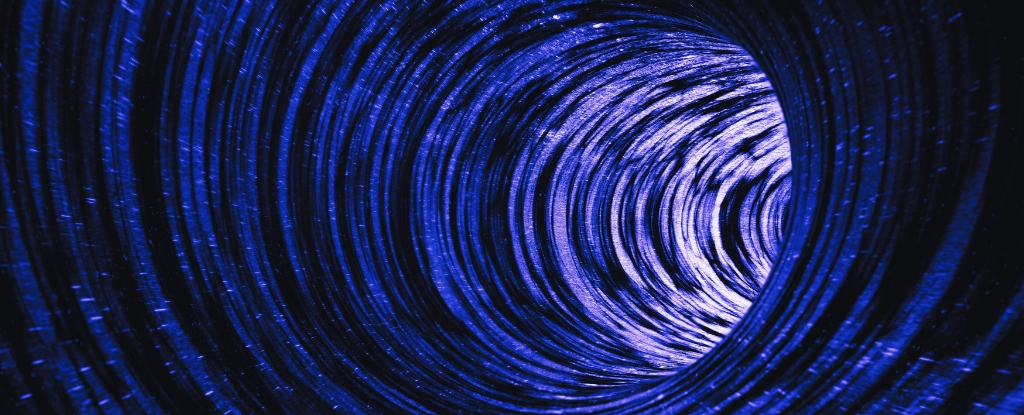What is gravity without mass? Both Newton’s revolutionary laws describing its universal effect and Einstein’s proposal of a dimpled spacetime, we’ve thought of gravity as exclusively within the domain of matter.
Now a wild new study suggesting that gravity can exist without mass, conveniently eliminating the need for one of the most elusive substances in our Universe: dark matter.
Dark matter is a hypothetical, invisible mass thought to make up 85 percent of the Universe’s total bulk. Originally devised to account for galaxies holding together under high speed rotation, it has yet to be directly observed, leading physicists to propose all sorts of out-there ideas to avoid invoking this elusive material as a way to plug the holes in current theories.
The latest offering in that vein comes from astrophysicist Richard Lieu at the University of Alabama in Huntsville, who has suggested that rather than dark matter binding galaxies and other bodies together, the Universe may contain thin, shell-like layers of ‘topological defects’ that give rise to gravity without any underlying mass.
Lieu started out trying to find another solution to the Einstein field equations, which relate the curvature of space-time to the presence of matter within it.
As Einstein described in his 1915 theory of general relativity, space-time warps around bundles of matter and streams of radiation in the Universe, depending on their energy and momentum. That energy is, of course, related to mass in Einstein’s famous equation: E=mc2.
So an object’s mass is linked to its energy, which bends space-time – and this curvature of space-time is what Einstein described as gravity, a notch more sophisticated than Newton’s 17th-century approximation of gravity as a force between two objects with mass. In other words, gravity seems inextricably linked to mass.
Not so, posits Lieu.
In his workings, Lieu set about solving a simplified version of the Einstein field equations that allows for a finite gravitation force in the absence of any detectable mass. He says his efforts were “driven by my frustration with the status quo, namely the notion of dark matter’s existence despite the lack of any direct evidence for a whole century.”
Lieu’s solution consists of shell-shaped topological defects that might occur in very compact regions of space with a very high density of matter.
These sets of concentric shells contain a thin layer of positive mass tucked inside an outer layer of negative mass. The two masses cancel each other out, so the total mass of the two layers is exactly zero. But when a star lies on this shell, it experiences a large gravitational force dragging it towards the center of the shell.
“The contention of my paper is that at least the shells it posits are massless,” Lieu says. If those contentious suggestions bear any weight, “there is then no need to perpetuate this seemingly endless search for dark matter,” Lieu adds.
The next question, then, is how to possibly confirm or refute the shells Lieu has proposed through observations.
“The increasing frequency of sightings of ring and shell-like formation of galaxies in the Universe lends evidence to the type of source being proposed here,” Lieu writes in his paper. Although he admits that his proposed solution is “highly suggestive” and cannot alone discredit the dark matter hypothesis.
“It could be an interesting mathematical exercise at best,” Lieu concludes. “But it is the first [mathematical] proof that gravity can exist without mass.”
The study has been published in Monthly Notices of the Royal Astronomical Society.





